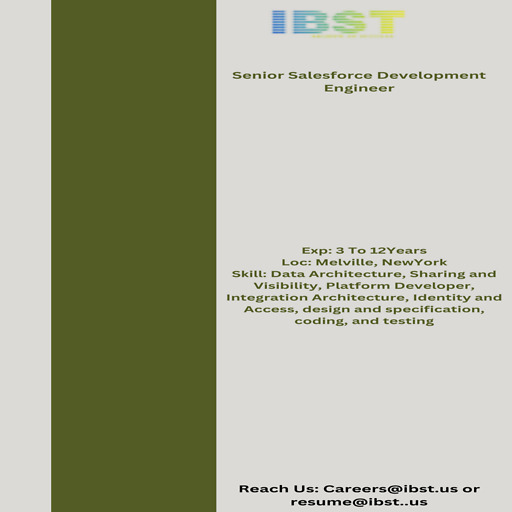#IntegrationArchitecture
Explore tagged Tumblr posts
Text
"Unlocking Efficiency and Precision: The Power of Control Integration Services"
Control Integration Services: Elevating Efficiency and Precision in System Management
In the ever-evolving landscape of modern business, the integration of control systems is becoming increasingly essential. To stay competitive and optimize operations, organizations need effective Control Integration Services (CIS). These services unify various control systems, enhancing operational efficiency, accuracy, and management precision. Let’s explore how Control Integration Services can transform your business operations.
What Are Control Integration Services?
Control Integration Services focus on integrating diverse control systems into a single, cohesive framework. Whether it's industrial automation, building management, or IT infrastructure, CIS ensure that various systems—such as process control systems, building management systems (BMS), and IT management tools—work together seamlessly. The primary objective is to create an integrated platform that enhances system communication, streamlines operations, and provides comprehensive real-time data.
Key Benefits of Control Integration Services
Increased Operational Efficiency: Integrating control systems into one unified platform simplifies operations, reduces duplication of efforts, and minimizes manual interventions. This leads to significant cost savings and more efficient use of resources, ultimately boosting productivity.
Enhanced Accuracy and Precision: With real-time data and analytics from integrated systems, organizations can make more informed decisions. This improves the precision of operations and reduces errors, leading to better overall performance.
Centralized Monitoring and Management: Control Integration Services provide a centralized interface for monitoring and managing all integrated systems. This centralization facilitates easier oversight and quicker issue resolution, enhancing operational control.
Scalability and Flexibility: Integrated control systems offer scalability and adaptability to changing business needs. Whether expanding operations or upgrading technology, CIS allow for the seamless integration of new systems and technologies.
Improved Security: A unified approach to system integration enhances security by providing a consolidated view of system activities and access controls. This helps in identifying and mitigating potential security threats more effectively.
Core Components of Control Integration Services
System Assessment and Planning: Successful integration begins with a detailed assessment of existing systems. This involves evaluating current control technologies, identifying integration gaps, and developing a strategic integration plan.
Integration Architecture Design: Designing an effective integration architecture involves selecting appropriate technologies and protocols for seamless communication between systems. This includes defining data exchange methods and system interactions.
Implementation and Configuration: The implementation phase involves setting up the integration framework, configuring various systems, and ensuring that all components work together as intended. Careful coordination and thorough testing are essential to ensure successful integration.
Testing and Validation: Comprehensive testing is critical to validate the integration and ensure it meets performance and reliability standards. This includes functional testing, performance assessment, and user acceptance testing.
Ongoing Support and Maintenance: Post-implementation support is crucial for addressing any issues and ensuring the continued smooth operation of integrated systems. Regular maintenance and updates are necessary to keep the system efficient and up-to-date.
Real-World Applications
Industrial Automation: In manufacturing, Control Integration Services streamline operations by integrating process control systems, safety systems, and enterprise resource planning (ERP) systems. This integration enhances production efficiency and minimizes downtime.
Building Management Systems (BMS): For commercial buildings, integrating HVAC, lighting, and security systems into a single BMS platform improves energy efficiency and operational control. This results in better resource management and reduced operational costs.
IT and Data Centers: In IT environments, Control Integration Services help manage data center operations, including server monitoring, network management, and security. Integrated systems ensure efficient, reliable, and secure IT infrastructure.
Conclusion
Control Integration Services are pivotal for organizations aiming to enhance efficiency and precision in their operations. By integrating various control systems into a unified framework, businesses can achieve greater accuracy, improved operational control, and centralized management. Whether in industrial settings, building management, or IT infrastructure, CIS offer substantial benefits that drive operational success and support growth.
As technology progresses, the need for effective system integration will only increase. Investing in Control Integration Services today positions your organization for a more efficient, accurate, and secure future.
#ControlIntegrationServices#SystemIntegration#OperationalEfficiency#IndustrialAutomation#BuildingManagementSystems#ITInfrastructure#ProcessControl#RealTimeData#SystemOptimization#IntegrationArchitecture#TechIntegration#CentralizedManagement#DataCenterManagement#ScalableSolutions#PrecisionEngineering#BusinessEfficiency#SecurityIntegration#AutomationSolutions#TechnologyTrends#SmartBuildingTechnology
0 notes
Text
Salesforce Integration Architecture Designer Exam Tips

Are you planning to take the Integration architecture designer exam? Exciting! Luckily, there’s loads of good content around that you can use to revise for the exam.
Exam Objective
The Salesforce Certified Integration Architecture Designer exam has the following characteristics:
· Content: 60 multiple-choice/multiple-select questions* (5 unscored questions will be added)
· Time allotted to complete the exam: 90 minutes (time allows for unscored questions)
· Passing Score: 67%
· Registration fee: USD 400, plus applicable taxes as required per local law
· Retake fee: USD 200, plus applicable taxes as required per local law
· Delivery options: Proctored exam delivered onsite at a testing center or in an online proctored environment. Click here for information on scheduling an exam.
· References: No hard-copy or online materials may be referenced during the exam.
· Prerequisite: None
I just passed the exam last July and thought it would be useful to share my experience with you. So here we go, these are my top tips:
Get hands-on experience.
Nothing beats experience. This exam is actually very easy if you have previously worked on real integration projects. In case you haven’t used every one of the Salesforce integration mechanisms in real life projects (and admittedly, there are quite a few of them.) my advice would be to follow the Fravo’s study help that relates to the mechanism and get hands-on there.
Make sure you have a good understanding of the technical integration concepts.
Concepts like integration architecture, patterns, SOAP vs REST, protocols and security are necessary to fully understand the Salesforce integration mechanisms and as a consequence to be able to recommend the best Salesforce solution for a given scenario.
Develop a detailed knowledge of all the integration mechanisms available in Salesforce.
What specific problems do they solve? When should you use them? Any constraints? Advantages? Disadvantages? What are the Salesforce limits that relate to them?
There are several questions in the exam where it would appear that there could be more than one answer. In these cases, look for the restrictions stated in the scenario – there might be some clues there to help you choose the best solution. For example, is it really necessary to use Bulk API for the given situation – maybe REST API is just fine given the data volume stated in the question?
Use the pdf available, not to memorize the answers (they might be wrong!) but to familiarize yourself with the format of the questions. Some of the questions are long and include loads of details. Having an idea of their format before the exam is quite helpful.
Visit the given url https://www.fravo.com/INTEGRATION-ARCHITEC-exams.html
Well that’s all for now, I wish you the very best in your exam!
0 notes
Photo

Senior Salesforce Development Engineer Exp: 3 To 12Years Loc: Melville, NewYork Skill: Data Architecture, Sharing and Visibility, Platform Developer, Integration Architecture, Identity and Access, design and specification, coding, and testing
Job Description: • 3 to 5 year of development experience with SAP Business Objects • Working Knowledge and In-depth understanding of Business Objects Platform (4.x) • Good understanding for SAP BICS connectivity and experience in creating OLAP Universes & WEBI reports using BEX queries and HANA Calculation Views. • Experience in mapping business requirements to functional and technical specs, and deliver BOBJ reports • Strong experience on Webi, BO launch pad, Dashboards, and visualization • Strong experience in design and development of Universes using IDT/UDT • Experience in consumption of multiple sources like BW4HANA, HANA and Oracle…etc. • Experience development of reports with multiple tabs, multiple queries on a single screen, list & crosstab reports, charts, hyperlinking, drill-down and drill-through • Good Knowledge of Data Warehouse & BI Concepts. Good knowledge on SQL • Knowledge on different reporting tools like AFO and Tableau • Good to have knowledge on CMC and security aspect (BO users/groups/folders… etc.) and promotion management • Good to have knowledge on SAP BW4HANA/HANA source objects like Bex Queries and Calculation views
#ibst #godigitalz #muzejobs #jobs #indiajobs #bangalorejobs #chennaijobs #hyderabadjobs #coimbatorejob #DataArchitecture #Sharing #Visibility #PlatformDeveloper #IntegrationArchitecture #Identity #Access #design #specification #coding #testing
0 notes